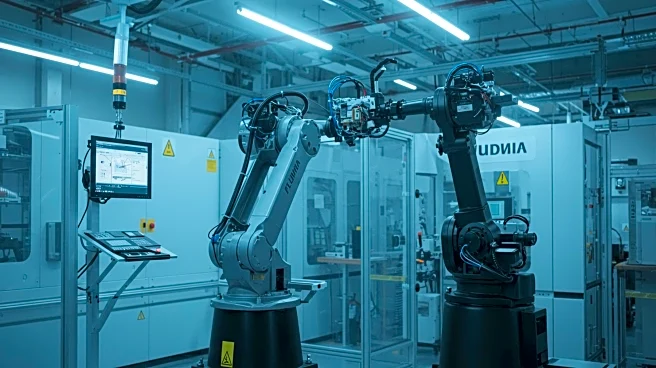What is the story about?
What's Happening?
A research team from the Korea Advanced Institute of Science and Technology (KAIST) has developed a self-powered photodetector that achieves a sensitivity boost up to 20 times higher than existing products. This innovation utilizes a novel device structure incorporating a van der Waals bottom electrode and a partial gate, allowing the photodetector to function without an external power source in environments with light. The device's sensitivity exceeds 21 A/W, making it significantly more responsive than conventional sensors. This advancement is particularly relevant for applications in wearable devices, biosignal monitoring, IoT devices, autonomous vehicles, and robots.
Why It's Important?
The development of this high-performance photodetector represents a significant leap in semiconductor technology, particularly for applications requiring precise sensing without reliance on batteries. The ability to operate self-powered devices in light-rich environments could lead to advancements in miniaturization and efficiency in next-generation electronics. Industries such as healthcare, automotive, and consumer electronics stand to benefit from this technology, potentially leading to more sustainable and reliable products. The innovation also highlights the potential for two-dimensional semiconductors to overcome traditional limitations associated with doping processes.
What's Next?
The research team at KAIST plans to further explore the applications of this technology in various fields, including sensors and electronic components. The successful implementation of a PN junction without doping opens new avenues for semiconductor research, potentially leading to more breakthroughs in self-powered devices. As industries continue to seek energy-efficient solutions, this technology could play a crucial role in shaping future electronic devices.
Beyond the Headlines
This development raises important questions about the future of semiconductor manufacturing and the role of two-dimensional materials in advancing technology. The ethical implications of increased surveillance capabilities through more sensitive sensors also warrant consideration, as does the potential environmental impact of widespread adoption of self-powered devices.
AI Generated Content
Do you find this article useful?











